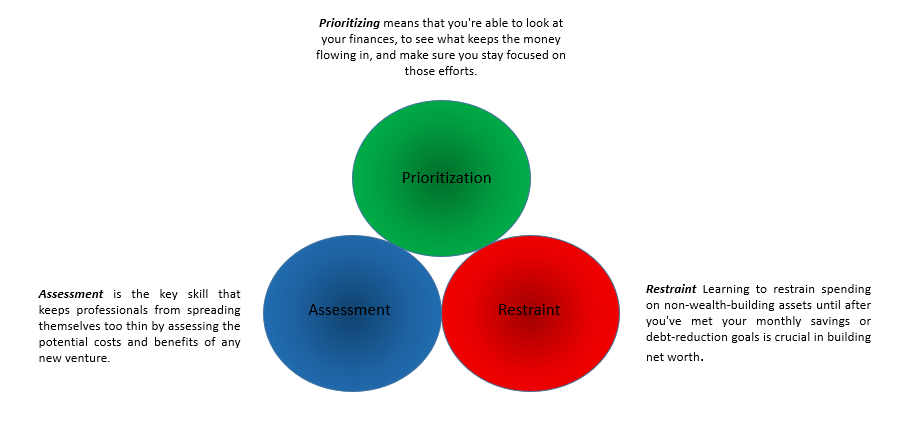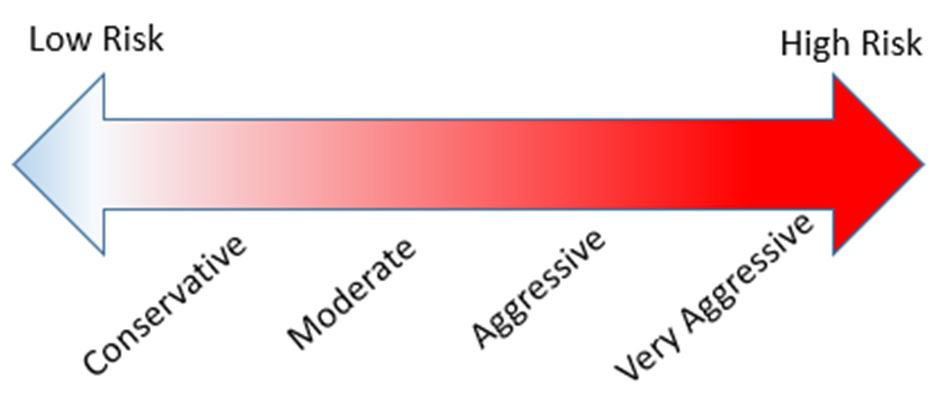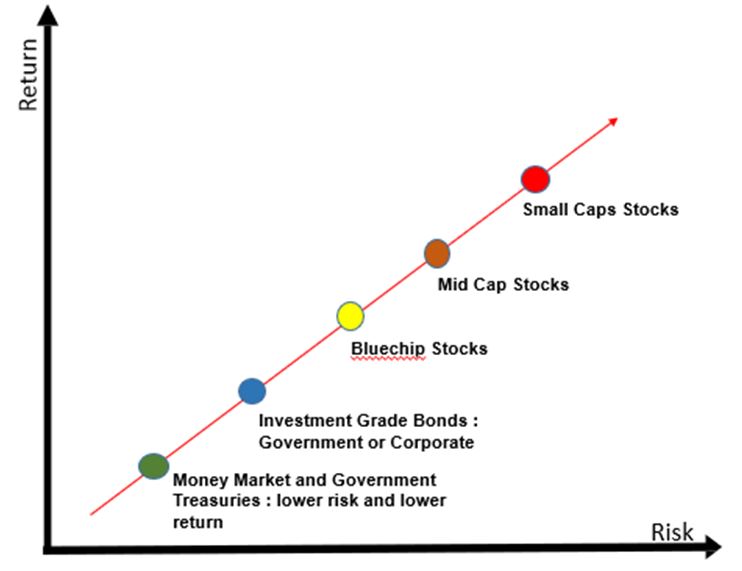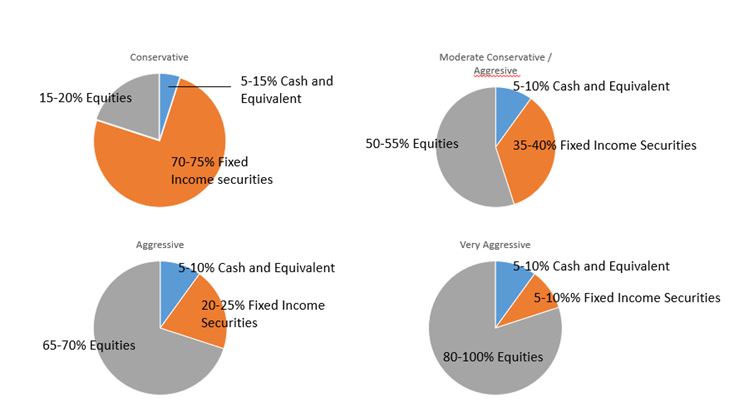Investment Corner
At a Glance
Investing knowledge
Better knowledge about investing will give you greater confidence
Get tips on how to keep your wealth goals on track
Research team at DBS will guide you through your investing journey
We provide comprehensive information
We help you build your wealth by giving knowledge from our expertise
Investing
By investing, you commit your money or capital to a business to gain profit. It also allows you to work smarter by growing your money and to prioritize your financial future over your present desire.
By investing, you set aside your hard-earned money and let it work for you. You will fully reap the benefits from your investment in the future and enjoy a happier life with better finance.
You can invest your money in a number of different products, such as stocks, bonds, mutual funds, ETF, commodities and real estate, etc. Some types of investment:
Some type of investment :
Stocks
Buying stocks gives the buyer the opportunity to participate in the company’s success through the increase in the stock price and dividends that the company distributes.
Bonds
A bond is a debt instrument whereby an investor effectively lending money to a company or agency (the issuer) in exchange for periodic interest payments plus the return of the bond’s face amount when the bond matures.
Mutual Funds
A mutual fund is a pooled investment vehicle managed by an investment manager allowing investors to have their money invested into stocks, bonds or other investment vehicles as stated in the fund prospectus.
Mutual funds are valued at the end of trading day and any transactions to buy or sell shares are executed after the market close as well.
ETFs
ETF, or exchange-traded fund, is like a mutual fund in many respects, but traded on the stock exchange during a trading day just like stocks. Unlike mutual funds which are valued at the end of each trading day, ETFs are constantly valued while the markets are open.
Alternative investments
Other than stocks, bonds, mutual funds and ETFs, you can also invest in real estate. Real estate investment can be made by buying a commercial or residential property directly or through Real Estate Investment Trusts (REITs) that pool investors’ money and purchase properties. REITS are traded like stocks. Some mutual funds and ETFs also invest in REITs.
Managing Personal Finance
Personal finance involves managing your money, saving and investing. It covers budgeting, banking, insurance, mortgage, investment, retirement planning, tax planning and home ownership financial planning.
Personal finance is about meeting your personal short-term or long-term goals financial goals, including planning retirement or saving for your child's future education. It depends on your incomes, expenses, necessities as well as goals and desires – and coming up with a plan within your financial constraints. To make the most of your income and savings, it's important to become financially literate, so you can decide between good and bad advice and make right decisions
Personal Finance Planning Tips :
- Do Budgeting , Budgeting is essential to living within your means and having enough saving to meet your long-term goals. The 50/30/20 budgeting method offers a great framework and it goes as follows: 50% of your net income (after taxes) goes to necessities, 30% is allocated to lifestyle expenses, and 20% is for debt payment and saving for both retirement and emergencies.
- Create an Emergency Fund, It is important to ensure money is set aside for unexpected expenses, such as medical bills. Between three to six months' worth of living expenses is the ideal amount of emergency fund you should have. Financial experts generally recommend putting away 20% of your income every month for saving, but once you fulfil your emergency fund, you shouldn’t stop. Continue saving the monthly 20% for other things, such as retirement.
- Limit Debt, To avoid debt, don't spend more than you earn. If you must take a debt, pick the one that is productive and advantageous, like taking a mortgage to buy assets.
- Use Credit Cards Wisely,Credit cards need to be properly managed, which means that the balance should be paid off every month, so you will not have to pay high interest.
- Think about Your Inheritance , To protect your assets and ensure that your wishes are followed when you pass away, you should make a will. You can discuss this matter with trustworthy insurers. You will need to periodically review your policies. Having insurance coverage is one way to make sure your family can meet their needs following your passing.
- Plan For Retirement, Experts suggest that most people will need about 80% of their current salary to live comfortably during their retirement. The earlier you start, the more benefit you will get from the compounding interest and you will see how small amounts grow over time. Setting aside money now for your retirement allows it to grow over a long term.
Last but not least, - Talk to the experts, Even though you may be competent enough to do your own taxes or manage your investment portfolio, it does not mean you should do it yourself. Consulting a financial planner is a good way to start. You can set up an account at a securities company, or you can invest in a bank. Nowadays banks provide one-stop service for all financial solutions, including investing in stocks, bonds, insurance and mortgages.

Asset Allocation
is a strategy of dividing your investment portfolio across various asset classes, like stocks, bonds and money market securities, to minimize risks and potentially increase gains. Since each asset class has various levels of risk and return, investors should consider their risk tolerance, investment objectives, time horizon and available capital as the basis for their asset composition. Investors with a longer time horizon and larger sums to invest may feel more comfortable with high-risk, high-return options. In contrast, investors with smaller sums and shorter time spans may feel more comfortable with low-risk, low-return allocations.
 Model Portfolio
Model Portfolio
- Conservative model portfolios,generally allocate most of the total portfolio to lower-risk assets such as fixed-income and money market. The main goal of a conservative portfolio is to protect the principal value of portfolio. However, even if you are very conservative and prefer to avoid volatility, some small portion of the asset can be invested in stock market to help offset the inflation. You can invest the equity portion of the portfolio in high-quality blue chip companies or mutual funds.
- Moderately conservative portfolio is preserve a large portion of the portfolio's total value, but are willing to take on a higher amount of risk to get some inflation protection. With this strategy, you chose securities that pay a high level of dividends or coupon payments
- Moderately aggressive model portfolios are often called balanced portfolios ,as the asset composition is divided almost equally between fixed-income securities and equities to provide a balance of growth and income. Since these portfolios have a higher level of risk than conservative ones, this strategy is best for investors with a longer time horizon (generally more than five years) and a medium level of risk tolerance.
- Aggressive portfolios, mainly invest in equities, so their value tends to fluctuate quite significantly. The main goal of an aggressive portfolio is to obtain a long-term growth of capital. To provide some diversification, investors with aggressive portfolios usually add some fixed-income securities.
- Very aggressive portfolios, almost entirely invest in equities. The goal is to achieve an aggressive growth of capital over a long-time horizon. Since these portfolios carry a considerable amount of risk, the value of the portfolios will have potential volatility.

Should you need more information, contact our Relationship Manager,
Or visit us at the nearest DBS branch in your town.
Quick Links
Need Help?

